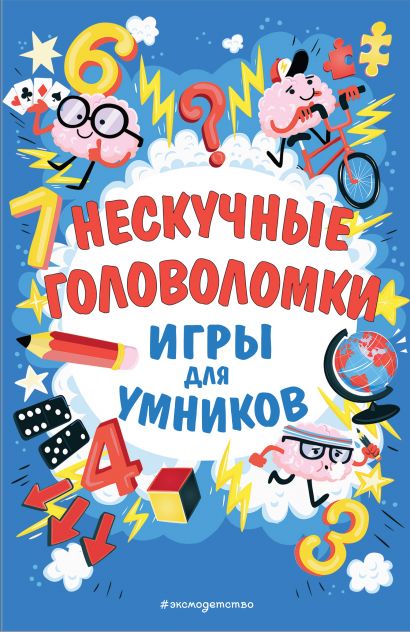In 2017, pupils of GBOU DO OSDYUSSHOR in gymnastics showed the following sports results.
In 2016, pupils of GBOU DO OSDYUSSHOR in gymnastics showed the following sports results.
In 2014, pupils of GBOU DO OSDYUSSHOR in gymnastics showed the following sports results.
In 2011, pupils of GBOU DO OSDYUSSHOR in gymnastics showed the following sports results.
In 2010, pupils of GBOU DO OSDYUSSHOR in gymnastics showed the following sports results.
In 2009, pupils of GBOU DO OSDYUSSHOR in gymnastics showed the following sports results.Ekonomika_Axie_Infinity_pochemu_vzlom_games_lishil_polzovateley_realnogo_zarabotka__Rusbase
Economy of Axie Infinity: why hacking the game deprived users of real earnings | Rusbase
Player rewards dropped from $55 to $1.41
 .0208, news of the hack sent the SLP back below two cents.” />.0208, news of the hack sent the SLP back below two cents.” />.0208, news of the hack sent the SLP back below two cents.” />
.0208, news of the hack sent the SLP back below two cents.” />.0208, news of the hack sent the SLP back below two cents.” />.0208, news of the hack sent the SLP back below two cents.” />
Without a keyword
On March 23, the world's most popular crypto game suffered one of the biggest heists of all time. A hacker hacked into the blockchain that runs Axie Infinity, a game where you can exchange virtual winnings for real money, and stole $620 from users' accounts. The incident remained unsolved for almost a week, and exposed security vulnerabilities in Axie Infinity, as well as damaging the reputation of developer Sky Mavis.
RED is the first open database of the most prominent entrepreneurs in Russia.
However, the hack could also harm hundreds of thousands of Axie Infinity users, most of whom live in one of the world's poorest countries. In recent times, their income has already been under threat, as the growing popularity of the game has made it harder to earn money.
One such player was Pablo, who started playing at a difficult time in his life. Last year, due to quarantine, a 26-year-old man was locked in his parents' house near Manila. The pandemic has taken his job as a teacher. After his father was hospitalized with the coronavirus, Pablo's family owed medical bills in the hundreds of dollars.
“I spent all my time at home looking for a part-time job, but I couldn’t find anything,” he says.
Then, in June 2021, Pablo got a chance to be saved, which at first seemed like a joke. A friend sent him a picture of three cartoon characters that looked like a cross between a puffer fish and a cat. He said that he paid 40,000 Philippine pesos, $767, for the NFT of these creatures, and that they can be earned.
Screenshot: Dmitri Lissov / YouTube
This is how Pablo got into the world of Axie Infinity, a digital space where monster-like creatures fight each other for a cryptocurrency called Smooth Love Potion (SLP), which can be exchanged for other digital tokens, such as ether, or fiat currency. Pablo couldn't afford to buy playable characters, so he borrowed them from another player in exchange for 40% of his winnings.
In Axie Infinity, players fight with special cards, a cross between Pokémon and a card game. The winner receives SLP. Pablo watched tutorials on YouTube and Twitch and competed in solo mode for weeks on his phone and PC.
Within two months, Pablo, who uses a pseudonym to hide his identity from his employer, was earning up to 4,000 pesos, or $80 a week, twice the salary of a teacher. He paid for his father's bills and his sister's schooling. "Three Little Creatures" changed his life. “I gained financial freedom,” he admits.
The story of Pablo and others like him is what the founders of Sky Mavis dreamed of when they launched Axie Infinity in 2018. They believed that the “play to earn” format could bring real money to real people, especially in poor countries like the Philippines, where SLP winnings are comparable to wages, and for marginalized categories this is the only chance to get involved in new blockchain-based technologies. .
Investors saw a potential gold mine in the project. Leading venture capital firms in Silicon Valley invested $160 million in Sky Mavis in 2021, making the developer Vietnam's most valuable $3 billion startup.
With a peak of 2.5M connected users, Axie Infinity leads the blockchain gaming market, which now accounts for nearly 50% of blockchain activity.
In 2020, blockchain games attracted $88 million in investments, and in 2021, they will already attract $4 billion.
Such games are also profitable in their own right: Axies is the best-selling NFT series ever, reaching $4 billion in sales. By comparison, the Bored Ape Yacht Club collection is worth $1.5 billion. tokens in Axie Infinity brought Sky Mavis $1.3 billion.
Blockchain gaming allows players “to be very comfortable with cryptocurrencies when they don’t even have a credit card,” says Yat Siu, founder of Hong Kong-based Animoca Brands and an early investor in Sky Mavis.
Until the end of last year, Axie Infinity was largely in line with the Web 3.0 hype. Nearly 3 million users played the game every day, more than half of them in the Philippines.The average cost of an Axie character has tripled in the first seven months of 2021 to nearly $500. At one point, the value of SLP surged over 1,000% in one week in April to over 30 cents per token.
The boom spawned success stories like Pablo's. The players who owned a piece of the world of Axie Infinity were in fact in control of their own destiny. “We have seen this country rise, this economy, in real time,” says Jeffrey Zirlin, co-founder of Sky Mavis, who is now leading the development of the project.
But in any economy – even one where cartoon characters fight – there is always a risk of collapse.
That risk was especially high earlier this year when Sky Mavis made drastic changes to its game to stave off the digital equivalent of a currency crisis. The developers found that in the virtual world, problems of the real economy are also possible – inflation, sharp currency fluctuations and business boom and bust cycles.
The creators of the platform have taken on the role of a central bank. Their decisions determine who wins and loses in the digital world, and whether players like Pablo can afford food and rent in the real world.
This is a big responsibility for the project, which appeared in an office of 26 square meters. m in Ho Chi Minh City, and this burden only increased when Sky Mavis faced a massive hack.
The founders of the startup met over a shared interest in CryptoKitties, a platform founded in 2017 on the Ethereum blockchain that allows users to exchange cat NFTs. Developer Trung Nguyen, now the CEO of Sky Mavis, hired co-founders Larsen, Zirlin, Tu Doan and Andy Ho to help him create a new blockchain game called Axie Infinity that would be similar to CryptoKitties but better.
In 2018, the team raised $100,000 by selling in-game NFTs before the game even launched. In 2020, they raised another $860,000 by issuing a game-related token.
Axie Infinity launched in October 2018. During the first year of its existence, it attracted only a few thousand players.The founders explain with elementary gameplay and basic graphics. Conceptually, the game is still primitive, but now the number of daily active users has grown from 38 thousand in April 2021 to 1.9 million in September 2021, peaking at 2.5 million by the end of the year.
In July 2021, Binance, the world's largest crypto exchange, briefly stopped trading SLP due to too much volume. Larsen attributes this growth mainly to the pandemic lockdown forcing people to stay inside and the power of social media.
55% of Axie Infinity users are in the Philippines, where gaming revenues can exceed real wages.
In May 2021, Axie Infinity paid players 150 SLP per day for playing single-player mode and daily tasks, which is equivalent to $55 – five times the minimum daily wage in Manila.
The player guilds were one of the reasons why Axie Infinity's user base grew so quickly. They covered the high cost of entry for players who couldn't afford it in exchange for a share of the players' future earnings. The largest of these is Yield Guild Games (YGG), founded by Gabby Dizon in October 2020. Dizon, a mobile gaming executive in Manila, was one of the first 500 Axie Infinity players.
“We found that we could basically create a lot of Axies and then lend them to people,” Dizon explains. YGG provided NFTs to 20,000 Axie Infinity players in Asia, Africa, and South America. YGG Community Managers who train players receive 20% of player winnings, while the guild itself receives 10%.
As players flocked to Axie Infinity, so did the investments. In May 2021, a group of investors, including Mark Cuban and Reddit founder Alexis Ohanian, invested $7.5 million in Sky Mavis, valuing the company at $2 billion. Five months later, Andreessen Horowitz, a crypto fund, led a $152 million round. , raising the Sky Mavis valuation to $3 billion.
But as the number of Axie Infinity users grew, so did the supply of SLPs, driving down the value of the asset. The SLP fell from a peak of $0.3645 on May 2, 2021 to a low of $0.0094 on February 3, 2022.All of a sudden, the 150 SLP that cost the players in Manila $55 turned into $1.41.
Axie Infinity's economy is "basically inflationary," said Lars Doucet, an independent game developer and consultant for Naavik.
This required drastic measures. Sky Mavis has eliminated SLP payouts in single player mode and reduced rewards for defeating an opponent by a third. Players didn't like it, to say the least: in February, Axie Infinity had 1.7 million daily active users, 33% less than at the beginning of the year. As of March, Axie Infinity's year-to-date revenue was just $27.2 million, 10 times less than in 2021, according to Sky Mavis.
Too much growth caused Axie Infinity's financial crisis. Too little growth can also spell disaster, sending the economy into the equivalent of a deflationary spiral with lower incomes, lower transactions, and fewer players. “When tokens are required as an entry price and their supply is limited, the result can be huge price volatility for these tokens, since their value is not dependent on anything other than demand,” explains Eswar Prasad, author of The Future of Money: As a Digital the revolution is transforming currencies and finance.”Now the developer will have to replace those who entered the game as an investor with users who just want to play. In February, the free mode was launched.










